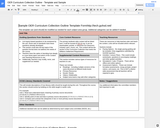
A template for developing openly licensed educational resources from Grossmont Union High School District.
- Subject:
- Education
- Material Type:
- Teaching/Learning Strategy
- Provider:
- Grossmont Union High School District
- Date Added:
- 08/25/2017

A template for developing openly licensed educational resources from Grossmont Union High School District.

These are full-course openly licensed resources for districts interested in exploring OER options when considering core instructional materials for district adoption. Course materials are available for online viewing or download.

This resource provides guidance for school districts when considering OER for adoption as well as currently available full-course openly licensed resources to consider.
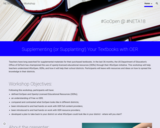
Teachers have long searched for supplemental materials for their purchased textbooks. In the last 36 months, the US Department of Education’s Office of EdTech has championed the use of openly-licensed educational resources (OERs) through their #GoOpen initiative. This workshop will help teachers understand #GoOpen, OERs, and how it will help their school districts. Participants will leave with resources and ideas on how to spread the knowledge in their districts.
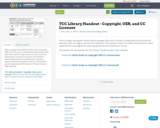
This is a 3-page "quick guide" handout about copyright, OER, and CC licenses, including what they look like and what they mean for usage in and out of the classroom. This handout is meant for students and would be a useful supplement for any assignments requiring openly licensed multimedia or sources. This handout also accompanies the TCC Library's "Student Guide to OER" LibGuide.

This module was created in response to an observed need by BranchED and the module authors for efforts to increase the recognition, adaptation, and use of open educational resources (OER) among pre- and in-service teachers and the faculty who work in educator preparation programs. The module's purpose is to position teacher educators, teacher candidates and in-service teachers as empowered content creators. By explicitly teaching educators about content that has been licensed for re-use and informing them about their range of options for making their own works available to others, they will gain agency and can make inclusive and equity-minded decisions about curriculum content. The module provides instructional materials, resources, and activities about copyright, fair use, public domain, OER, and visual literacy to provide users with a framework for selecting, modifying, and developing curriculum materials.

This module provides faculty in higher education with an introduction to the use and creation of Open Educational Resources. It is intended for faculty who are new to the principles of Open Education. Several of the examples in this module relate to higher education in Canada, but you are encouraged to adapt the resources you suit your context.It can be used as part of a course on open education and would benefit from an expanded discussion of Open Pedagogy, an additional module on Open Access, and a module on Developing Open Policies for higher education institutions.

This is a set of ten peer-reviewed, openly licensed, self-paced modules for faculty, staff, and administrators. It includes information on understanding OER; open licensing, including Creative Commons; finding and evaluating OER; accessibility; adapting, creating, and sharing OER; and OER policy and practice in Texas.

One of the greatest areas of potential for open educational resources (OER) is the opportunity for improved representation and coverage of identities that often go erased or poorly addressed in educational materials. Information about, by, and for trans and gender diverse people is one such topic. With knowledge and intention, those involved in the creation, adaptation, and use of OER can find and incorporate materials that center trans and gender diverse people. Doing this is essential for supporting trans and gender diverse students and educating everyone about these identities. This resource is a guide on how to make OER more inclusive and representative of trans and gender diverse people. It is intended to be easily incorporated into a scholarly communications course, while also being valuable to faculty and others interested in learning about the topic and how to make changes to their own course materials.
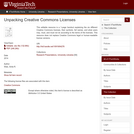
This editable resource is a 1-page handout explaining the six different Creative Commons licenses, their symbols, full names, and what users may, must, and must not do according to the terms of the licenses. This resource does not replace Creative Commons legal or human-readable license versions.
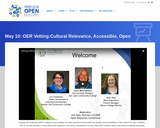
Finding and selecting OER to adopt at your college can raise questions about both the quality and accessibility of the content for your students. Join us for this webinar to hear about best practices and rubrics developed to ensure that OER content meets instructional material standards, accessibility guidelines, and open licensing policies established at your institution. These rubrics assist faculty, librarians, instructional designers and other staff to select and adapt open educational resources that meet student needs regardless of disability but are also culturally relevant and engaging for students at your institution and can be freely re-used, re-mixed, and re-distributed.

Module 1 is designed using open resources from WikiMedia, The Learning Portal, and other Creative Commons licensed materials. This module has been developed to provide an overview of OER and its history for faculty who are just getting started. (But mostly it was designed to see how this authoring tool works so that I can share the tool with our faculty!)
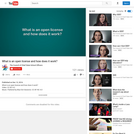
Brief video describing licensing and permissions associated with Open Educational Resources (OER), including various Creative Commons licenses. These licenses give content creators a standardized way to share their resources with other educators around the world.
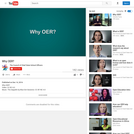
A brief video where OER experts give their reasons for working in the field of Open Educational Resources. Primary reasons include empowering teachers, equalizing access to education, reducing teachers' worries about copyright, reducing educational costs, and facilitating the open flow of information.